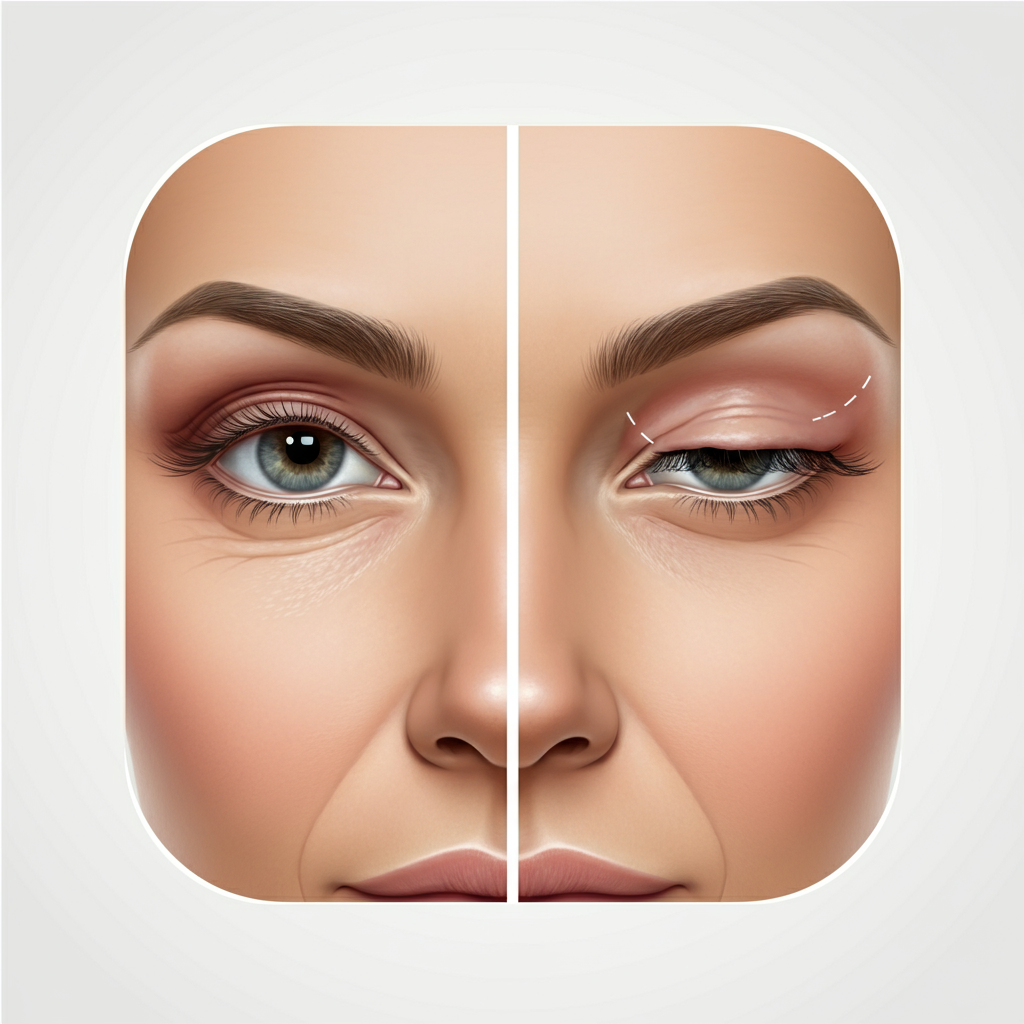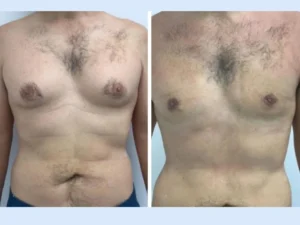
The eyes are often the first thing people notice, but sagging or drooping upper eyelids can make you appear more tired or older than you feel. This common concern can also sometimes interfere with your vision. Fortunately, a solution exists to restore a more youthful and alert appearance. An upper eyelid blepharoplasty surgery is a highly effective procedure designed to address these issues by removing excess skin and fat from the upper eyelids.
This guide will walk you through everything you need to know about this transformative procedure. We will explore what it corrects, who makes an ideal candidate, what to expect during the process, and the long-lasting results you can achieve.
What Does Upper Eyelid Blepharoplasty Surgery Correct?
An upper eyelid blepharoplasty surgery is a specialized procedure that precisely targets signs of aging and functional issues related to the upper eyelids. It is primarily performed to correct a condition known as dermatochalasis, which is the presence of excess, loose skin on the eyelid.
Here are the key problems an upper eyelid lift can resolve:
- Eyelid Hooding: Excess skin that hangs over the natural crease of the eyelid, sometimes even draping over the eyelashes.
- Puffiness: Bulges of fat that create a puffy, tired look in the upper eyelids.
- Tired Appearance: Drooping skin can create shadows that contribute to a perpetually fatigued expression.
- Visual Field Obstruction: In more significant cases, the sagging skin can hang low enough to block a portion of your peripheral vision, making activities like driving more difficult. An upper eyelid blepharoplasty surgery can restore a full field of vision.
Are You an Ideal Candidate for an Upper Eyelid Lift?
The best candidates for upper eyelid blepharoplasty surgery are generally healthy individuals who have realistic expectations about the outcome. You might be a good candidate if:
- You are bothered by the appearance of heavy or drooping upper eyelids.
- Your vision is partially obstructed by excess eyelid skin.
- You are a non-smoker or are willing to quit well before and after the procedure.
- You do not have serious eye conditions like severe dry eye, glaucoma, or a detached retina.
- You understand the recovery process and are committed to following post-operative instructions.
The first step is a thorough consultation with a board-certified plastic surgeon. This appointment is crucial for determining if upper eyelid blepharoplasty surgery is the right choice for you.
The Consultation and Surgical Process
Your journey begins with an in-depth consultation. Your surgeon will evaluate your facial anatomy, discuss your aesthetic goals, and review your medical history. They will explain the specifics of the upper eyelid blepharoplasty surgery, ensuring you feel fully informed.
How the Surgery is Performed
The upper eyelid blepharoplasty surgery is typically an outpatient procedure that takes about one to two hours. It is usually performed using local anesthesia with sedation, meaning the area is numb and you are relaxed, but you are not fully unconscious. In some cases, general anesthesia may be used.
The surgeon makes a precise incision within the natural crease of the upper eyelid. This placement is key, as it helps hide the resulting scar. Through this incision, your surgeon will:
- Remove or reposition excess fat deposits.
- Tighten underlying muscles if necessary.
- Excise the predetermined amount of loose skin.
- Close the incision with fine, often dissolvable, sutures.
This careful technique results in a smoother, more defined eyelid contour. An experienced surgeon ensures the outcome looks natural and refreshed, not “overdone.”
Recovery, Results, and Risks
Proper aftercare is essential for a smooth recovery and optimal results from your upper eyelid blepharoplasty surgery.
Recovery Timeline and Aftercare
While experiences vary, here is a general timeline:
- First Few Days: Expect some swelling, bruising, and mild discomfort. Your surgeon will recommend using cold compresses and keeping your head elevated to minimize these effects.
- Week 1: Bruising and swelling peak and then begin to subside. You may be able to return to non-strenuous work. Stitches are typically removed around 5-7 days post-op.
- Weeks 2-4: Most significant swelling and bruising will have resolved. You can usually resume light exercise, but avoid heavy lifting or strenuous activities.
- 1-3 Months: The final results of your upper eyelid blepharoplasty surgery will become more apparent as residual swelling fades completely.
Expected Results and Longevity
The results of an upper eyelid blepharoplasty surgery are long-lasting. While the natural aging process will continue, most patients enjoy their rejuvenated appearance for many years, often a decade or more. You will look more rested, alert, and youthful. If your vision was previously impaired, you will experience a wider, unobstructed field of sight. The upper eyelid blepharoplasty surgery delivers a subtle yet impactful enhancement.
Risks and Complications
Like any surgical procedure, an upper eyelid blepharoplasty surgery carries some risks, though complications are rare when performed by a qualified surgeon. Potential risks include infection, bleeding, dry eyes, difficulty closing your eyes, and visible scarring. Discussing these possibilities thoroughly with your surgeon is a key part of the consultation process.
Cost and Insurance Considerations
The cost of an upper eyelid blepharoplasty surgery can vary based on geographic location, surgeon’s expertise, and facility fees. When the procedure is performed purely for cosmetic reasons, it is not covered by insurance.
However, if it is deemed medically necessary—for instance, if significant hooding impairs your vision—insurance may cover a portion of the cost. This requires a visual field test to document the obstruction. Your surgeon’s office can help you navigate the requirements for a potential insurance claim.
Frequently Asked Questions
- Will I have a noticeable scar after the surgery?
The incisions for an upper eyelid blepharoplasty surgery are strategically placed in the natural eyelid crease, making them very well-concealed once healed. Over time, they typically fade to a fine, nearly invisible line. - How soon will I see the final results?
You will notice a significant improvement once the initial swelling and bruising subside within the first couple of weeks. However, it can take 2-3 months for the final, refined results of your upper eyelid blepharoplasty surgery to become fully visible. - Is the upper eyelid blepharoplasty surgery painful?
Most patients report minimal pain. Discomfort is typically managed effectively with prescribed or over-the-counter pain medication for the first few days. The procedure itself is not painful due to the anesthesia. Many patients are surprised by how comfortable the recovery is.



